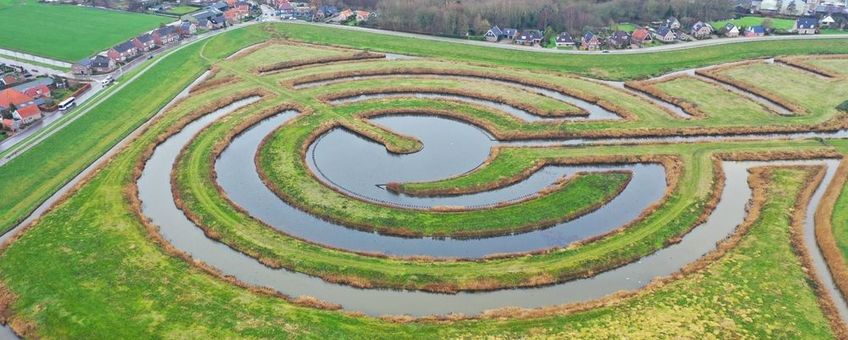
Nature-based solutions successful thanks to courage and customisation
Wageningen Environmental Research, Wageningen Social & Economic ResearchIn this way, nature-based solutions (NBS) can increasingly prove themselves as excellent alternatives to more traditional, civil engineering solutions to social tasks.
A team of researchers led by Sandra van Liere from Wageningen University & Research analysed seven Dutch cases in which NBS were applied, including the Grensmaas, the Koopmanspolder and the West Brabant Bee Landscape. It showed that NBS are most effective when embedded in long-term policies while allowing sufficient room for local interpretation. Although national frameworks and regulations form an important basis, practice shows that customisation at area level is decisive for the success of NBS-projects. With that customisation, an NBS can both contribute to the challenge (for example rainwater retention) and at the same time give a boost to the living environment and biodiversity.
Van Liere emphasises here: "For wider acceptance, it is essential that policymakers, businesses, and citizens are not only informed, but also actively involved in the development and implementation of these solutions. A clear, convincing story about the benefits of NBS is indispensable for this."
Groundbreaking cases show potential of NBS
Two telling examples from the report are the Grensmaas and the Koopmanspolder. The Grensmaas project in Limburg is one of the largest and most groundbreaking nature-based solutions in the Netherlands. Here, river restoration was combined with nature development and gravel extraction, resulting in a smart public-private partnership. The unique financing construction — in which the sale of gravel partly paid for the nature development — ensured that there were no public additional costs, while the nature value and water safety increased significantly.
In North Holland, the Koopmanspolder shows how innovative water control can be combined with nature restoration. In this project, a natural water buffer was created that responds flexibly to fluctuations in water levels, benefiting not only biodiversity but also drought and flood management.
Both cases show that combining ecological objectives with other societal interests, such as economy and safety, significantly increases the success rate and impact of NBS. Moreover, they underline the importance of administrative cooperation and an adaptive approach in which there is room for experimentation and learning.
Scaling up and future perspective
To apply NBS more widely, researchers advise policymakers to better align existing tools and regulations with what NBS need. The nature-based solutions policy compass (in Dutch) provides guidance for developing policy. One of the action perspectives identified is to create space for experimentation and a long-term vision on spatial planning and the role NBS can play in it. Potentially, NBS are excellent or even better alternatives to the standard approaches often chosen.
The report concludes that nature-based solutions not only address the societal challenge, but also contribute to aspects such as nature and climate resilience and aspects of broad welfare. "Through cooperation, clear policies and appropriate rules of the game, NBS can become an integral part of spatial development in the Netherlands", Van Liere said.
More information
- The report (in Dutch): 'Aanjagen van nature-based solutions: Leerpunten en handelingsperspectieven uit zeven Nederlandse praktijkvoorbeelden'.
Text: Wageningen Environmental Research; Wageningen Social and Economic Research
Image: Shutterstock
